If you’ve ever driven through a winter storm, you know it can get a little tense. Especially when roads are covered in snow and ice. You might not be able to avoid winter, but you can be ready for it with a set of winter or snow tires, including studded options. We have some tips to help you make the right choice about studded winter tires, how studs keep you in control, and when they can be used in your state.
Studs are lightweight, small metal spikes (studs) that are staggered and inserted across the tread of a winter tire. These studs protrude slightly from the rubber tread surface, helping break through packed snow and ice-covered roads to give you better traction. Note: Extra tread depth is needed to accommodate studs, so studded tire size options are often limited.
A good set of tires is essential for winter driving, whatever the weather. If you’re heading into snow and ice, studded tires can have a big impact on your safety. A vehicle equipped with winter traction tires can stop faster on ice than a car without those tires — even if you’re driving just 15 miles per hour.
Studded tires work best on snow and ice-covered roads that have yet to be fully plowed. As the studs pierce the ice and snow, they provide extra traction to keep you safe and in control.
Snow tires, and especially studded winter tires, are specifically designed to help you stay on the road in snow zones or mountain regions where the temperature regularly drops below 40 degrees. Snow tires are distinguished by a mountain snowflake symbol on the sidewall of the tire. This indicator means the tires have been tested and proven for snow, ice, and slush.
The benefits of snow tires include improved traction, vehicle handling, and skid control thanks to deeper, wider, and more jagged tread than regular tires. This tread allows the tire to pick up snow and maintain traction. The studs on some of those tires give them added grip on snow and ice.
This tread allows the tire to pick up snow and maintain traction. The studs on some of those tires give them added grip on snow and ice.
Studded tires are not always the best option for safe winter driving. Studded tires provide optimal traction on ice or packed snow. But studless winter tires work well on slush and packed snow thanks to wide, deep grooves in the tread and lots of irregular surfaces with sharp edges. These allow the rubber to cut through the snow and grip the road.
As temperatures steadily rise, it’s time to replace your winter tires with all-season or performance tires. We recommend swapping back when you do not plan to drive on snow or ice-covered roads, or when nighttime temperatures are consistently 50º F. As temperatures rise, the special rubber compound found in winter tires can wear out much faster.
Les Schwab Tip: If your winter tires have studs, your state has specific dates those tires must be removed from your vehicle. Find your state’s information here.
Find your state’s information here.
Les Schwab can help you choose the right winter tires for where you drive, including a good knowledge of local state laws.
Winter tires are designed to provide extra traction and control on snow and ice. The differences between studded and studless winter tires go beyond tiny metal studs.
Studless snow tires offer great traction for most winter conditions without the metal spikes. Wide, deep grooves in the tread help keep you in control.
Studded tires have spikes or studs that break through packed snow and ice for added traction.
If you do choose a set of studded winter tires for your vehicle, remember there are state-by-state laws regulating when and where you can use them. U.S. states that do allow studded snow tires permit their use from mid-winter to early spring.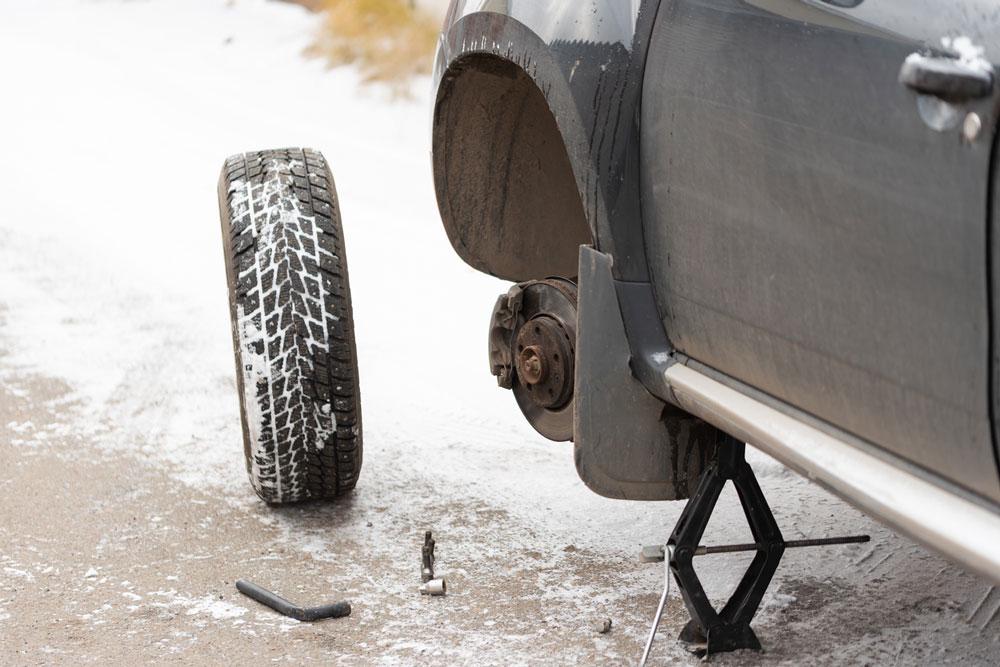 Driving outside specified dates can carry a steep fine along with plenty of disapproving looks from your fellow drivers.
Driving outside specified dates can carry a steep fine along with plenty of disapproving looks from your fellow drivers.
Studded tire use is regulated by each state. Driving with studded tires on clear roads not only wears down your studs, it can also decrease stopping distance. That’s because your tread is not making optimal contact with the road — your studs are.
For legal stud dates in your region, check out this state-by-state list of studded tire regulations as reported by the U.S. Tire Manufacturers Association.
The price for a set of studded winter tires depends on the size of tire you need for your vehicle, the features of those tires, the warranty, as well as other options. The experts at Les Schwab can help you choose the right winter tires for your car or truck.
Depending on where you drive and the winter conditions you face, studded winter tires could add safety to outings in tough winter conditions. Studded or regular winter tires could be a good choice if you’re a winter sport enthusiast, often navigate unmaintained winter roads, or if you plan to drive in the snow and ice every week. The pros at Les Schwab can help you face winter with the right tires.
Studded or regular winter tires could be a good choice if you’re a winter sport enthusiast, often navigate unmaintained winter roads, or if you plan to drive in the snow and ice every week. The pros at Les Schwab can help you face winter with the right tires.
The right set of winter tires can be found at your local Les Schwab. Stop by today or schedule an appointment and we’ll help you decide on the best winter traction to keep you in control and safely on the road.
Outside's long reads email newsletter features our strongest writing, most ambitious reporting, and award-winning storytelling about the outdoors. Sign up today.
Nowhere does consumer perception lag further behind on-the-ground reality than in the car world. And that’s a problem, because your outdated beliefs, loyalties, and superstitions are probably costing you money and compromising your safety.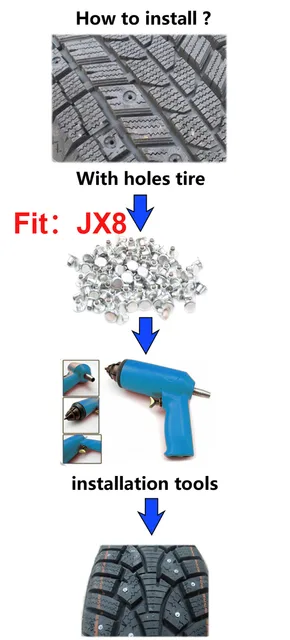
We discussed just that last year, when I told you that running winter tires matters way more than buying an all-wheel drive car. But that article had one major flaw: I neglected to explain why studded tires are so vastly inferior to the modern studless alternative. And readers have since indicated that they are actually running studded tires in conditions that don’t merit them. This is my attempt to fix that.
Studs Only Grip IceIf you don’t read any further, the fact that studs only provide additional grip on clear ice is probably the most important takeaway I can give you. Studs themselves are small, sharp metal protrusions installed into the tread of a tire. Because they get between the rubber and whatever surface you’re driving across, they need to be able to poke into that surface and momentarily stick there, resisting lateral forces, in order to provide grip.
Picture other winter surfaces: in packed, loose, or deep snow, the studs will definitely penetrate, but they won’t find the resistance necessary to actually add grip.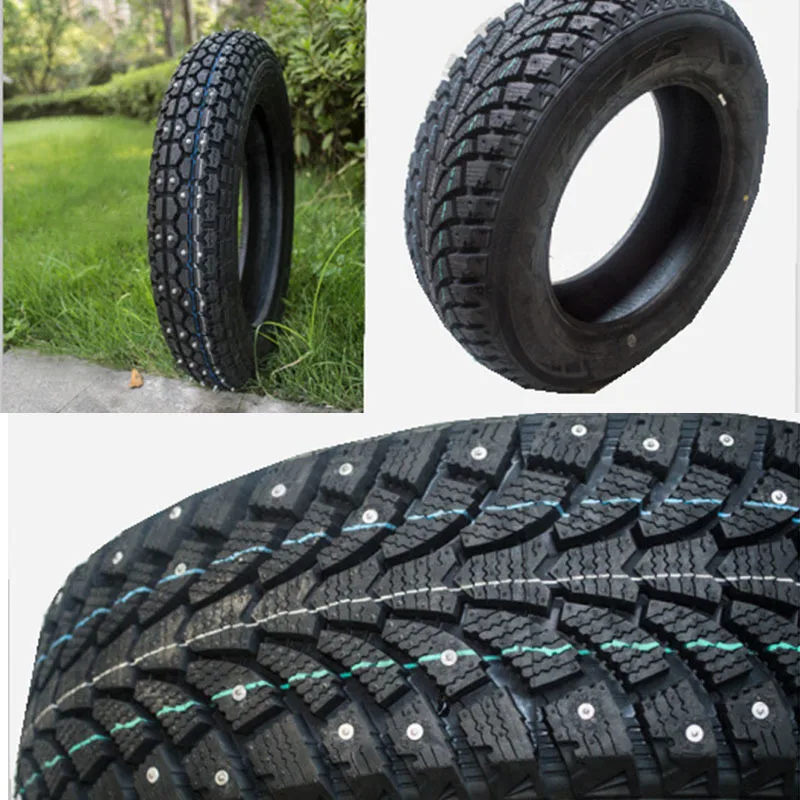 In slushy or wet conditions or on bare pavement, the tire needs to come into contact with the road surface in order to find traction—and the metal studs actually get in the way of that.
In slushy or wet conditions or on bare pavement, the tire needs to come into contact with the road surface in order to find traction—and the metal studs actually get in the way of that.
So studs help on bare ice only, do nothing for you in snow, and actually make you less safe in other conditions.
For last year's article on all-wheel-drive versus better tires, I interviewed Woody Rogers, the head of Tire Rack’s testing team. Because Tire Rack is the largest online tire retailer, Rogers tests virtually all makes and models of tires and his job is to be as objective as possible. Tire Rack doesn’t care about selling you a specific tire; they care about selling you the best tire for your needs. “Drivers can’t dictate the surfaces they drive on,” he told me. “They just need a tire that works across all the hazardous conditions they face in winter months.” And that’s not studs.
And Even on Ice, Studs Only Work at Certain TemperaturesBack in 2001, Washington State conducted an exhaustive study into the performance of studded tires.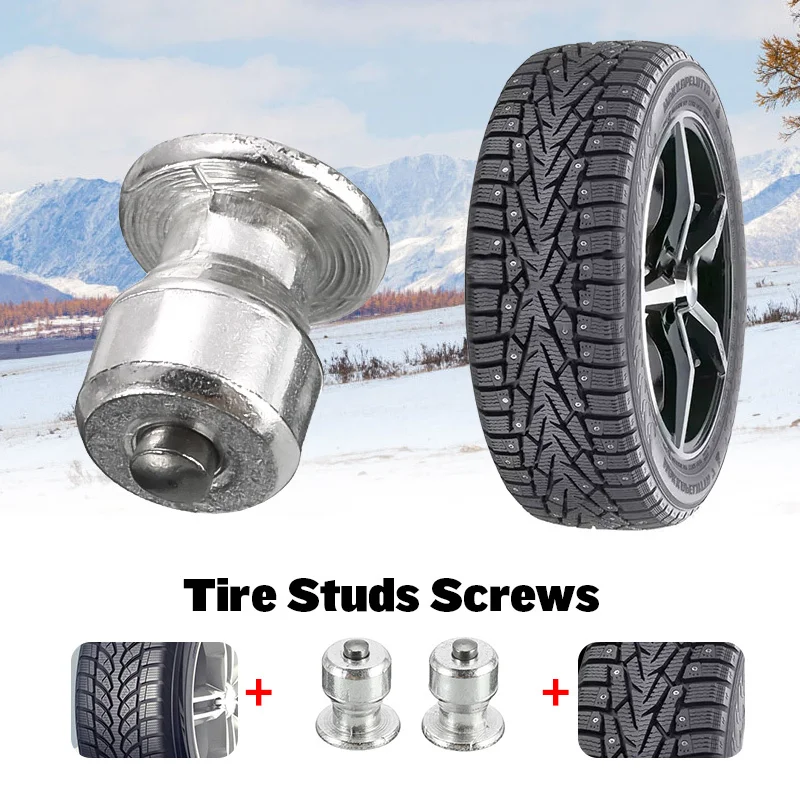 One of its most interesting conclusions was that, while studs do grip clear ice very well, they only do so under a very specific set of circumstances.”Studs are most effective on ice at or near 32 degrees F and lose their efficacy as temperatures drop and the ice becomes too hard for the studs to grip or when temperatures rise and ice melts to slush or wet pavement,” the study reads. The minimum effective temperature for studs? Zero degrees Fahrenheit, according to the study.
One of its most interesting conclusions was that, while studs do grip clear ice very well, they only do so under a very specific set of circumstances.”Studs are most effective on ice at or near 32 degrees F and lose their efficacy as temperatures drop and the ice becomes too hard for the studs to grip or when temperatures rise and ice melts to slush or wet pavement,” the study reads. The minimum effective temperature for studs? Zero degrees Fahrenheit, according to the study.
And that’s a huge problem, because bare ice in those temperature ranges where studs help only exists on roadways for a very small amount of time. In Washington, the study found that conditions where studs work only exist one percent of the time. In Alaska, those conditions occurred just six percent of the time during winter months. In Connecticut, that number is just half a percent. In Ontario, bare ice between zero and 32 degrees accounts for less than two percent of vehicle miles traveled.
Go back to Rogers’s quote above, and you’ll see why having a tire that only works as advertised in such specific, rare circumstances will be problematic. I called him back up for help with this article. “There is absolutely a time and place where a studded tire is a superior solution,” he tells me. “But I don’t know a place in the U.S. where conditions merit studs all winter. So, you have to consider managing the tradeoffs.”
I called him back up for help with this article. “There is absolutely a time and place where a studded tire is a superior solution,” he tells me. “But I don’t know a place in the U.S. where conditions merit studs all winter. So, you have to consider managing the tradeoffs.”
Tiny metal spikes don’t grip pavement as well as soft, pliable rubber. So, by getting between the rubber and the road, studs actually reduce grip, and therefor safety, in slushy, wet, or dry conditions.
A study conducted in Alaska in 1994, soon after the advent of modern studless winter tires, compared the braking, acceleration, and cornering performance of studded, studless winter, and all-season tires across packed snow, clear ice, and bare pavement.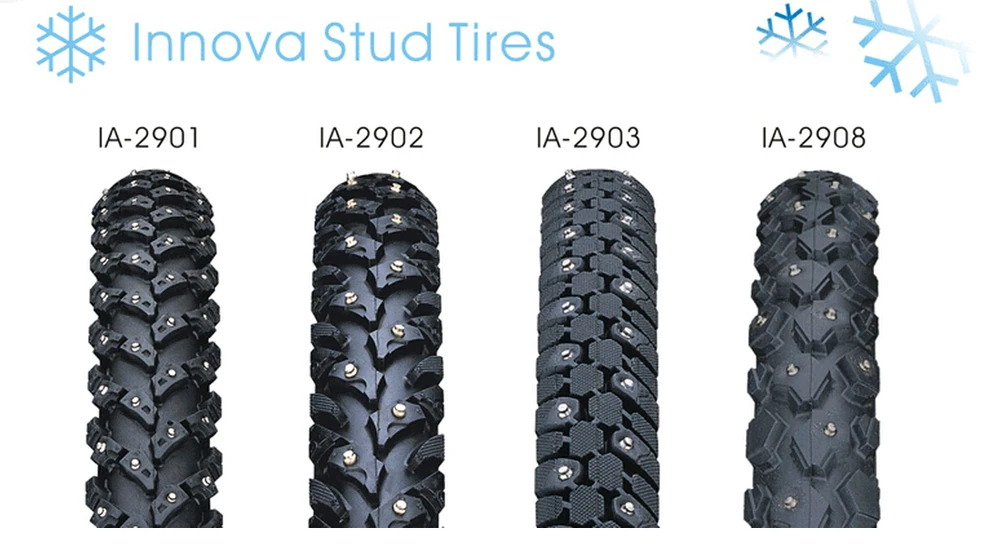 Studded tires demonstrated some advantage in braking and acceleration on bare ice, were actually out-cornered by studless winter tires, and were demonstrated to reduce grip in all tests on bare pavement. Consider the small fraction of the time in which conditions merit studs and you can see that you are sacrificing grip—and, again, safety—throughout most of the winter.
Studded tires demonstrated some advantage in braking and acceleration on bare ice, were actually out-cornered by studless winter tires, and were demonstrated to reduce grip in all tests on bare pavement. Consider the small fraction of the time in which conditions merit studs and you can see that you are sacrificing grip—and, again, safety—throughout most of the winter.
“There is absolutely a time and place where a studded tire is a superior solution. But I don’t know a place in the U.S. where conditions merit studs all winter. You have to consider the tradeoffs.”
And that's assuming your studs are in good condition. “Think about how much of your driving here in the U.S. is spent on non-snowpack roads,” says Rogers. “And that is wearing at the studs, blunting the sharpness of them, and wearing them down. That takes away some of the traction advantage.”
How much grip is lost as studs wear? “When stud protrusion diminishes to 0.024 in. (0.6 mm), the frictional effect from the studs becomes negligible,” concludes the Washington study.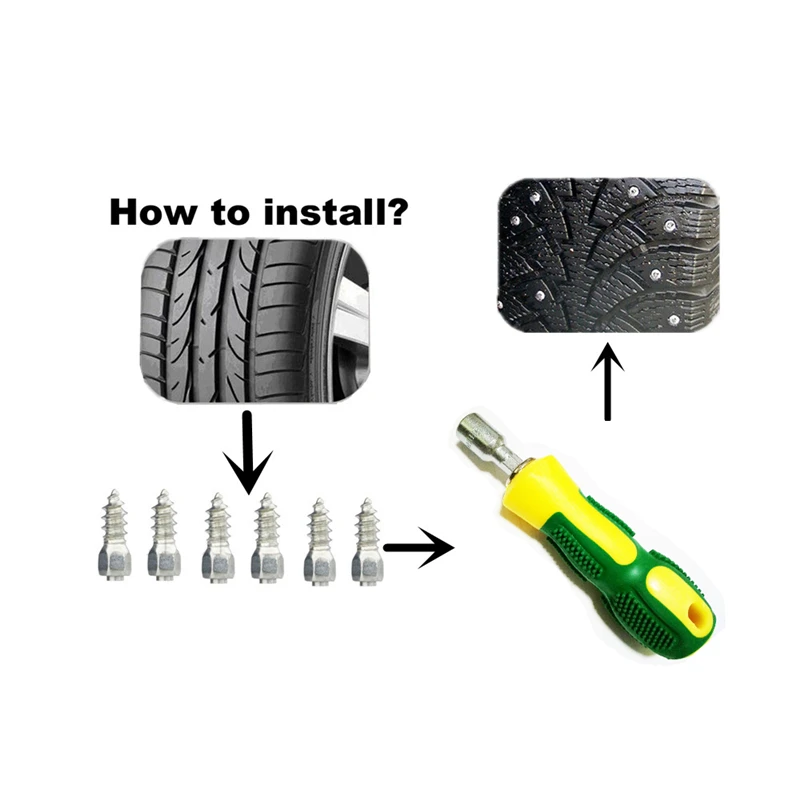 It found that after just 1,000 miles of driving on bare pavement, the braking distance of studded tires increased by 12 percent.
It found that after just 1,000 miles of driving on bare pavement, the braking distance of studded tires increased by 12 percent.
Studs aren’t the only things that wear when they’re driven on bare pavement. The road surface itself is also torn to pieces. By damaging pavement so significantly, studs actually create a significant amount of pollution, throwing microscopic asphalt and concrete particles into the air. In Japan, concerns about this type of pollution led to the development of moderns studless winter tires in the early 1990s. Studs are now banned in that (very snowy) country.
“And then there’s the noise,” says Rogers. “The noise is crazy. I still remember the first time we drove on studded tires as part of a test here, I was in a caravan with other cars, and we had a studded car and a studless car. I was an eighth of a mile behind the studded car, and even with the windows up, I could here the noise from the tires of the car ahead of me.”
All that for a small advantage in one specific circumstance that only accounts for a tiny fraction of the miles you’ll log during the winter?
Stopping distances on bare ice, at different temperatures.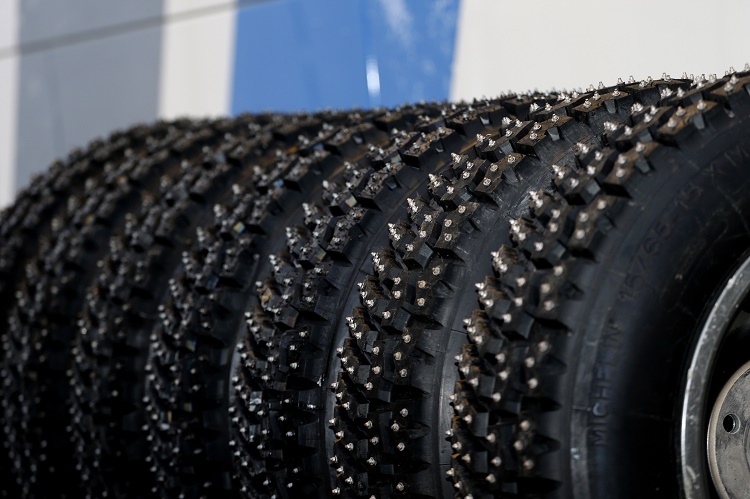 (Washington State Transportation Center)Studs Aren’t Great to Drive On
(Washington State Transportation Center)Studs Aren’t Great to Drive OnBack in the 2000s, when it was my job to test new cars, I once crashed a Corvette into a bank of frozen snow way up in northern Sweden. Why? Well, because I’m an idiot, obviously. But part of the reason was also due to the unique handling characteristics of studded tires, which I failed to fully account for.
“With a studded tire, what we’ve found particularly during braking and acceleration, is that once the tire spins, the studs cut a groove in the ice,” says Rogers. “Then the next stud that comes along behind it comes right through that same groove and has nothing to grab onto.” It only takes about a quarter of a revolution for that effect to take place, and once it occurs, grip disappears instantly.
“That leads to what you felt in the Corvette,” Rogers tells me. “Grip, grip, grip, grip, grip, then whoops—who pulled the rug out?”
Even if you’re not lapping a car around a race track carved onto a frozen lake, this lack of communication from studded tires could impair your ability to drive safely in winter conditions. Whereas studless tires lose their grip progressively, communicating to the driver that they’re nearing the limits of available grip, studded tires lose grip suddenly, without warning. You won’t know you’re driving too fast for the conditions until you end up in a ditch.
Whereas studless tires lose their grip progressively, communicating to the driver that they’re nearing the limits of available grip, studded tires lose grip suddenly, without warning. You won’t know you’re driving too fast for the conditions until you end up in a ditch.
The simple answer is that studs are an outdated technology that's no longer relevant in the vast majority of driving conditions.
“The traction of studded tires is slightly superior to studless tires only under an ever-narrowing set of circumstances,” the Washington study concluded—way back in 2001. “With…the advent of the new studless tire, such as the Blizzak, since the early 1990s, the traction benefit for studded tires is primarily evident on clear ice near the freezing mark, a condition whose occurrence is limited. For the majority of test results reviewed for snow, and for ice at lower temperatures, studded tires performed as well as or worse than the Blizzak tire. For those conditions in which studded tires provided better traction than studless tires, the increment usually was small.”
For those conditions in which studded tires provided better traction than studless tires, the increment usually was small.”
This winter, will you drive in extreme cold? Will you drive on snow? Will you encounter bare, plowed highways? Winter driving is defined by its unpredictability. Fortunately for all of us, there is a device designed to deal with all of it: The modern studless winter tire.
https://ria.ru/20180118/1512786049.html
A slippery question: what is better for winter - studded or non-studded tires?
A slippery question: what is better for winter - studded or non-studded tires? - RIA Novosti, 03.03.2020
A slippery question: what is better for winter - studded or non-studded tires?
Winter in Russia always comes unexpectedly: in some regions for a couple of months, in others for half a year or even more. This season in the central regions of the country RIA Novosti, 01/18/2018
2018-01-18T08:00
2018-01-18T08:00
2020-03-03T09:05
/html/head/meta[@name='og:title']/@content
https://cdnn21. img.ria.ru/images/sharing/article/1512786049.jpg?15127838331583215528
img.ria.ru/images/sharing/article/1512786049.jpg?15127838331583215528
russia
RIA News
1
5
4.7
96
7 495 645-6601
Rossiya Segodnya
https: //xn---c1acbl2abdlkab1og.xn--p1ai/Awards/
2018
RIA Novosti
1
9000 54.7
9000
INTERNET-GrUAN.ru 9000 49000 49000 49000 49000 49000 49000 49000 49000 645-6601
FSUE MIA Rossiya Segodnya
https://xn--c1acbl2abdlkab1og.xn--p1ai/awards/
News
ru-RU
https://ria.ru/docs/about /copyright.html
https://xn--c1acbl2abdlkab1og.xn--p1ai/
RIA Novosti
1,000 .xn-p1ai/ awards/
RIA Novosti
1
5
4.7
9000
7 495 645-6601
FSUE MIA "Russia Today"
https://xn--c1acbl2abdlkab1og.xn--p1ai/awards/
RIA Novosti
1,000 .xn--p1ai/awards/
auto, russia
auto, Russia
MOSCOW, January 18 — RIA Novosti, Sergey Belousov. Winter in Russia always comes unexpectedly: in some regions for a couple of months, in others for six months or even more. This season, in the central regions of the country, almost no snow was seen until the New Year. Each motorist has already decided for himself which tires will best ensure his safety: studded or non-studded. RIA Novosti, together with tire industry experts, found out what is preferable in certain situations and how to behave on Russian roads when driving a car with one or another type of winter tires.
Winter in Russia always comes unexpectedly: in some regions for a couple of months, in others for six months or even more. This season, in the central regions of the country, almost no snow was seen until the New Year. Each motorist has already decided for himself which tires will best ensure his safety: studded or non-studded. RIA Novosti, together with tire industry experts, found out what is preferable in certain situations and how to behave on Russian roads when driving a car with one or another type of winter tires.
A total swindle: why pneumatic tires end up in a landfill
NaN , NaN:NaN
According to an analytical report by the Avto.ru Internet classification, Russians in 2017 preferred studded tires. In October last year, only about 15 percent of service users were interested in Velcro (as non-studded tires are commonly called), in November, demand grew by only a couple of percent.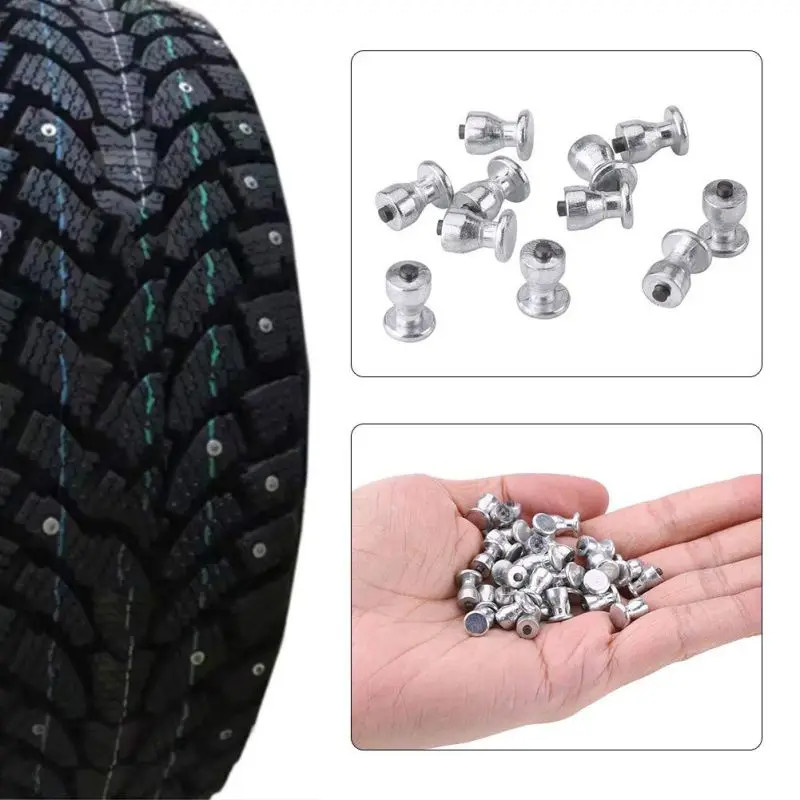
Studded are most popular in the Saratov and Smolensk regions, as well as in the Republic of Tatarstan (from 83 to 88 percent). Velcro attracts car owners from the Stavropol, Khabarovsk, Primorsky and Krasnodar Territories, as well as the Kaliningrad Region: there the share of studded tires did not exceed 14-30 percent of the total number of requests.
Everyone knows that studded tires are indispensable in small towns: snow is rarely or poorly removed there, densely packed snow crust is often formed, as well as ice. Numerous independent tire tests show that in these conditions the use of studs is justified, the braking distance of cars "shod" in them becomes significantly shorter.
Michael Zickfeld, Continental's Technical Customer Service Specialist, also recommends studded tires in the Russian metropolitan areas of Moscow and St. Petersburg. According to the expert, in both capitals, snow often melts on roads treated with reagents, and freezes again in the morning, turning into ice. If we add snowfall to this, then it is difficult to imagine a more dangerous situation: the advantage in this situation is on the side of cars with studded tires.
If we add snowfall to this, then it is difficult to imagine a more dangerous situation: the advantage in this situation is on the side of cars with studded tires.
"In 2004, the use of studded tires was banned in Norway for one season," says Michael Zikfeld. removed."
A Pirelli technician reminds you that studded tires are designed mainly for northern countries and are prohibited in most European countries. In Russia, such tires will ensure safety in most cities.
Shattered? Ten myths about car winter operation Pirelli specialists say that this concept is philistine. The principle of operation of all tires is friction, friction with the road surface. Modern companies offer a wide selection of rubber in their product lines, but you need to be able to distinguish between them. For example, there are so-called mild European winter tires designed for moderate winter temperatures and handling predominantly snow or wet surfaces. Others, just friction ones, are designed for harsh winters. There are also tires for southern regions (mainly European). They are usually called "all seasons", and they are not adapted for Russian winters, do not provide the proper level of safety, although in the summer they can be used, for example, for off-road driving.
Others, just friction ones, are designed for harsh winters. There are also tires for southern regions (mainly European). They are usually called "all seasons", and they are not adapted for Russian winters, do not provide the proper level of safety, although in the summer they can be used, for example, for off-road driving.
© Photo: courtesy of Continental Winter road
© Photo: courtesy of Continental
season in Russian latitudes. "One of the valuable benefits of non-studded tires is acoustic comfort," Pirelli notes.
Try to steal: five simple life hacks that will keep your car from being stolen
NaN , NaN:NaN
Michael Zickfeld from Continental explains how to distinguish different types of non-studded tires from each other: the sidewall of a tire for harsh winters is at right angles, while for European it is rounded. Euro winter tires are designed for operation from plus seven to minus 15 degrees Celsius. Most often they are used on dry asphalt or on wet snow. "Nordic" tires are designed for much lower temperatures: up to 50-60 degrees below zero. There is also a difference in the composition of rubber: tires are harder for mild winters, and softer for severe ones. By the way, you can’t even store European tires at minus 50, let alone drive them.
Most often they are used on dry asphalt or on wet snow. "Nordic" tires are designed for much lower temperatures: up to 50-60 degrees below zero. There is also a difference in the composition of rubber: tires are harder for mild winters, and softer for severe ones. By the way, you can’t even store European tires at minus 50, let alone drive them.
How steel was broken: deadly cars sold in Russia
NaN , NaN:NaN
The advantage of non-studded tires is best seen on dry pavement at plus and near zero temperatures, when there is no ice on the road. Tests also show that Velcro is much more stable on slush and loses traction at higher speeds than on a car with studded tires. As Michael Zikfeld explains, the lamellas of the "frictions" take the snow into themselves and make it grapple with the snow lying on the road. In addition, these grooves provide better water drainage. Even on a rolled snow surface or ice cover at negative temperatures down to minus 10 degrees Celsius, a water film is formed about a millimeter thick. Friction tires in this case drain water and provide a good grip. The liquid film disappears only at very low temperatures (about minus 30 degrees), and then non-studded tires lose their effectiveness.
Friction tires in this case drain water and provide a good grip. The liquid film disappears only at very low temperatures (about minus 30 degrees), and then non-studded tires lose their effectiveness.
Surprisingly, the more cars with studded tires in the city, the safer the operation of cars with non-studded tires. On an icy road, the spikes loosen the surface and thus create more grip for the Velcro. That is why, according to a Continental expert, friction tires can be used even in regions with severe winters. Of course, large cities are not alike, and winter somewhere in Siberia leaves almost no chance for non-studded tires.
One thing not to consider when choosing tires is the type of vehicle drive. “All drives brake equally, and what’s more, all-wheel drive cars weigh a little more than their 2-wheel drive counterparts, so quality tires that provide good deceleration are even more important to them,” says Zikfeld.
Braking is also affected by the width of the tire tread: if it is possible to install larger diameter discs on the car, then there is no doubt that with the same tires, the larger wheels will provide a little better deceleration.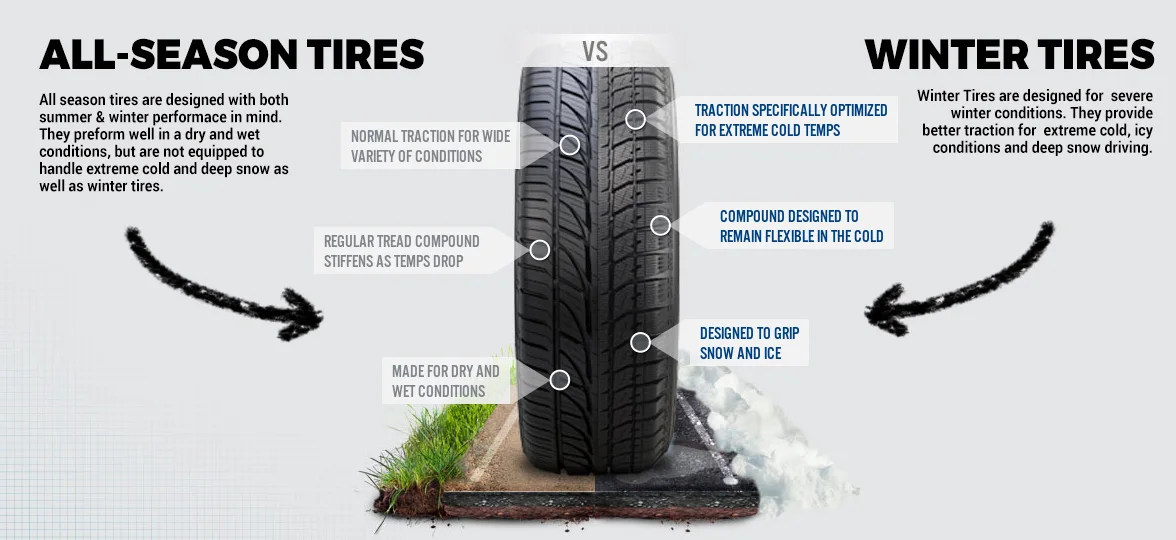
For the studs and tread of any tire to last longer, it is important to break it in. The Continental expert advises the first 500-800 kilometers to drive smoothly at a speed of no more than 100 kilometers per hour. So tires wear out less and last longer. Otherwise, the spikes will take the wrong position (bend at the wrong angle) and fly out faster. The same with the tread - without a break-in, it wears out much faster and the tire life can be reduced by two or more times.
"We monitor the use of tires in taxis - they drive there in a year as much as an ordinary driver in three or four years," says Michael Zickfeld. "So, in some cases, a tire becomes unusable after 25 thousand kilometers, and in others, with the same distance traveled, all the spikes on it are intact.
Pirelli is of the same opinion and adds that the service life also depends on the correct pressure, adjusted camber / toe-in, temperature in which the rubber is used, road surface and off-season storage conditions.
Through the snow and snowdrifts: what new cars will appear in Russia this winter
NaN , NaN:NaN
Do not sound the alarm if spikes start to fall out of the tire. "The loss of 10 percent of the spikes will not affect the behavior of the car," Continental notes. "Claws" usually fall out after 20 thousand kilometers, but if the driver drives the car aggressively, constantly starts with slippage, brakes sharply on dry pavement, this will happen much faster.
In a relaxed driving mode, the studs fall out as the tread wears out, but even after losing half the tire will still be able to provide an acceptable level of braking. Replacement will be required when the tread depth becomes less than four millimeters: the spikes will fall out like scurvy teeth.
For a friction tire, everything is much simpler: you only need to look at the tread depth. Many car manufacturers have indicators: numbers or images of snowflakes are gradually erased, suggesting when it is time to change tires. According to Russian laws, it is forbidden to use winter tires with a tread depth of less than four millimeters.
According to Russian laws, it is forbidden to use winter tires with a tread depth of less than four millimeters.
If one of the wheels fell into a pit, was damaged in an accident and the winter tire became unusable, it must be replaced carefully. Provided that the driver has driven accurately for one season, you can simply buy a new tire. However, if the tread has worn out over several winters, the Continental expert advises purchasing two new tires and putting them on the same axle.
Moreover, it is better to put worn tires (or one new and the other slightly worn) on those wheels that are not connected to the engine: that is, for a front-wheel drive car - on the rear axle, and for a rear-wheel drive - on the front. For an all-wheel drive car, the axle is unimportant. If the tire tread is worn down to almost four millimeters, all four wheels must be changed at once.
The fact that non-studded tires - we will also call them Velcro (this word reflects the nature of the tire) - can perform better than studded tires on ice, I happened to encounter about ten years ago in Finland. Representatives of Turvanasta, a company engaged in the development and manufacture of studs, decided to prove in practice that studded tires (then it was Nokian Hakkapeliitta 1) are more effective than non-studded Nokian RSi, which have recently appeared on the market. To do this, they even organized demonstration performances of two identical Volkswagen Passat, shod in the appropriate tires. The winter was not a little harsh: on the appointed day the temperature dropped below -45°C. What was the general surprise when a car on rubber without studs turned out to be on average 15-17% faster than a fellow on studs! Experts made excuses: frozen ice is harder than concrete and spikes are simply unable to pierce it; rubber in studded tires is stiffer and hardens in extreme cold so that it stops releasing spikes in the contact area with the road. And the Velcro, they say, are made of a softer composition...
Representatives of Turvanasta, a company engaged in the development and manufacture of studs, decided to prove in practice that studded tires (then it was Nokian Hakkapeliitta 1) are more effective than non-studded Nokian RSi, which have recently appeared on the market. To do this, they even organized demonstration performances of two identical Volkswagen Passat, shod in the appropriate tires. The winter was not a little harsh: on the appointed day the temperature dropped below -45°C. What was the general surprise when a car on rubber without studs turned out to be on average 15-17% faster than a fellow on studs! Experts made excuses: frozen ice is harder than concrete and spikes are simply unable to pierce it; rubber in studded tires is stiffer and hardens in extreme cold so that it stops releasing spikes in the contact area with the road. And the Velcro, they say, are made of a softer composition...
In our tests, which have been carried out for more than a dozen winters (and winters, of course, were different - from 30 degrees of frost to thaw), we periodically encountered this phenomenon.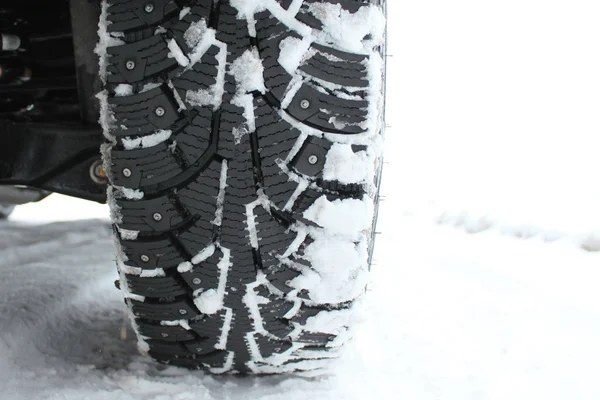 Finally, in order to give a clear answer to the question of whether Velcro can slow down better than spikes on ice, and if so, under what conditions, we conducted this study.
Finally, in order to give a clear answer to the question of whether Velcro can slow down better than spikes on ice, and if so, under what conditions, we conducted this study.
Of course, we were interested in the opinion of specialists from different companies, but we received rather cautious answers. Engineers at Continental and Michelin, for example, claim that the “equilibrium” temperature of studded and non-studded tires is 15 degrees below zero. If it’s warmer, spikes are more effective on ice, and Velcro is colder. At the same time, the state of the ice and ... the weather are very important. Rough ice helps stickies that cling to micro-irregularities, and on a glossy surface, spikes will cope with the task more successfully - this is obvious and does not require explanation. But the bright sun, even in frost, can slightly melt the ice and make it more slippery, primarily for stickies. Therefore, in the bright sun and clear ice, spikes may be better even at -20-25 ° C.
Watch your blood pressure! Unevenly inflated tires make braking trajectory unpredictable.
Watch your blood pressure! Unevenly inflated tires make braking trajectory unpredictable.
During the summer tire temperature test (SR, 2008, No. 8), we gained some experience in such comparisons (by the way, leading tire companies were very interested in our results). Now let's try to determine the effectiveness of spikes and Velcro on ice at different temperatures. An example from life is a section of the road rolled to a shine in front of the stop line...
The tests took place in February - March 2008. Studs 195/65R15 and Velcro of a slightly larger dimension - 205/55R16 participated in them. A small difference does not affect our main task.
In the "clawed" group we included the Michelin X-Ice North, known for its high stability of stud protrusion, and the Continental ContiWinterViking 2, which has wider studs.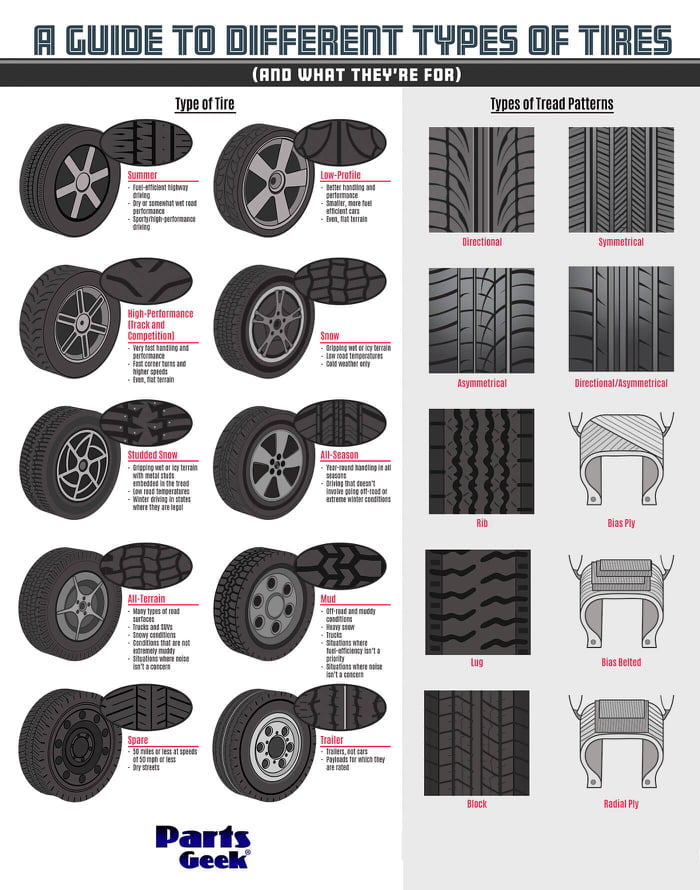 Opponents were selected from new products, first of all, promising not to be afraid of water on ice. These are Nokian Hakkapeliitta R, Michelin X-Ice 2 and Bridgestone Blizzak WS-60.
Opponents were selected from new products, first of all, promising not to be afraid of water on ice. These are Nokian Hakkapeliitta R, Michelin X-Ice 2 and Bridgestone Blizzak WS-60.
We will work on a Skoda Octavia car, braking from a speed of 50 to 5 km/h in order to eliminate errors in the operation of ABS (short-term blocking of the wheels) at low speed.
To ensure that only the air temperature affects the state of the ice, the measurements were carried out in cloudy weather or after sunset, which can quickly melt the ice.
It turned out that the "balance point" of spikes and Velcro is smeared in the range of 13-15 degrees of frost, therefore these results are taken as base ones.
In a frost of about 20° Velcro outperforms spikes by almost 20% of the braking distance! The results obtained allowed us to conclude that the lower the temperature, the greater the difference in favor of Velcro. The explanation is simple: as already noted, as the temperature drops, the force required to pierce the ice with a spike increases. In addition, cold ice is rougher, and Velcro is on hand.
In addition, cold ice is rougher, and Velcro is on hand.
Warming to -5°C has the opposite effect: the spikes begin to win back the stopping distance. And with a huge, almost 90% advantage! The water that appears between the ice and the tire acts as a lubricant and the Velcro slides. At the same time, softened ice allows the claws to go deeper, which means that the spikes brake more effectively.
The closer to zero, the more water in the contact patch. It already interferes with spikes - spikes do not hold well in softened ice, tear it and lose effectiveness. But not as threatening as Velcro. It turns out that studded tires are more versatile on slippery surfaces.
A word of caution: on smooth ice, especially on a sunny day, both tires brake worse even at lower temperatures.
-19 ± 1°C
The best braking properties of non-studded Michelin: 30.3 m. In this cold weather, the advantage is still on the side of wider "diamond" spikes.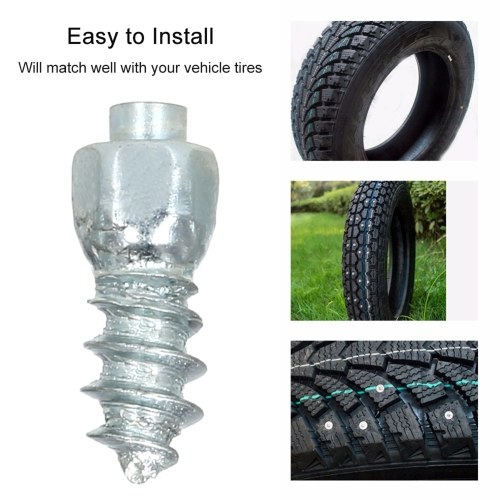 With a margin of 6.1 m, or 19.5%, the stickies win!
With a margin of 6.1 m, or 19.5%, the stickies win!
-13 ± 1°C
The best was the studded "Conti", the worst ... studded "Michelin". The difference between them was 6.7 m. Velcro, which took 33.2–35.2 m, were located in the middle. The average value for spikes is 34.4 m, for Velcro - 34.7 m. The difference is less than 1%. Under these conditions, Velcro and spikes slow down almost the same. 9m. Even the "Conti" with its "bryuliks" gives 3.2 m. The Velcro has completely failed! Nokian slows down with a result of 77.1 m, Michelin and Bridgestone exceed the mark of 80 m. The average value is 82.3 m. At this temperature, Velcro on ice unconditionally, almost two and a half times, lose to spikes.
When choosing tires, consider the climate of your region: severe snowy winters, frozen roads - non-studded wheels are preferable; mild winters, frequent thaws followed by icy conditions are better than thorns.
We noticed that at first subsequent braking of the Nokian Hakkapeliitta R on ice was better than the previous ones, the results stabilized only by the sixth attempt.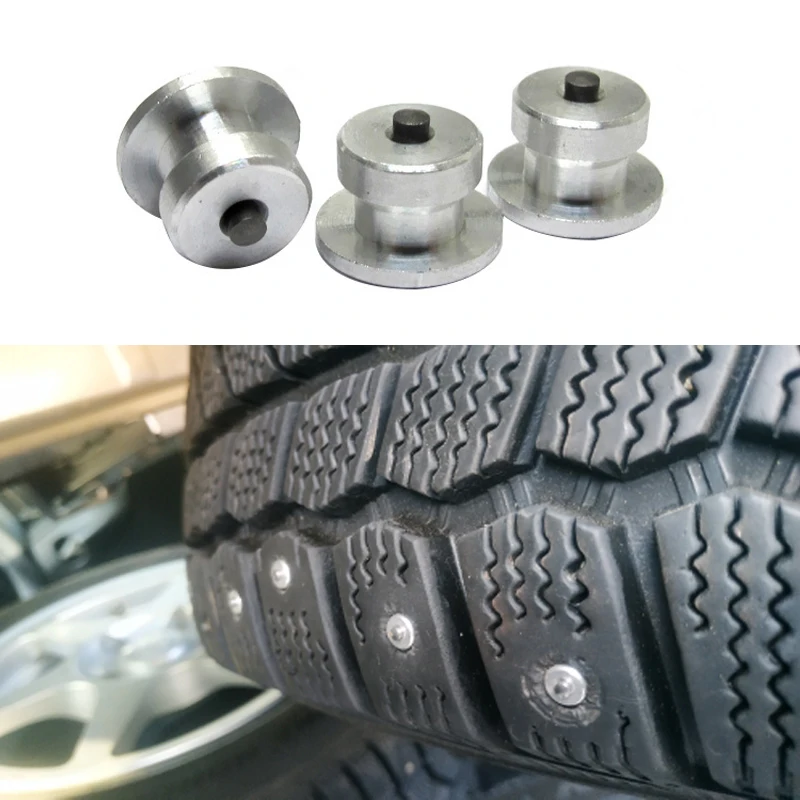 It was assumed that such a change in characteristics is due to the presence in the tread of special "capacities" designed to remove water from the contact patch. When approaching the ice rink along the snowy road, snow gets into them. As a result, the car slips on snow grains, and after several passes, the snow is shaken out of the tires and braking occurs already on clean ice.
It was assumed that such a change in characteristics is due to the presence in the tread of special "capacities" designed to remove water from the contact patch. When approaching the ice rink along the snowy road, snow gets into them. As a result, the car slips on snow grains, and after several passes, the snow is shaken out of the tires and braking occurs already on clean ice.
Nokian Tires specialists did not encounter such problems in their tests. But their tires were stored at positive temperatures (we have them in a cold container), and they were changed in a warm box. Warm tires easily get rid of snow when the car is driving on a snowy road to an icy area. It turns out that any car on these tires after a long stay in the cold will slow down worse until they warm up.
To get rid of this effect, the designers decided to make the inner surface of the "pockets" smoother so that the snow does not linger in them. To do this, the elements of the molds that form the walls of the "tanks" were carefully polished.